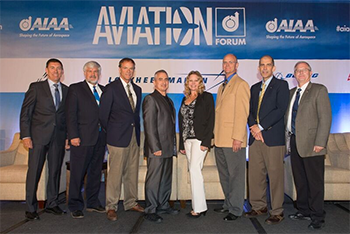By SWE Diverse Podcast
Originally Published 19 April 2023 by Society of Women Engineers
On this episode of Diverse, SWE President Dayna Johnson sits down with Starr Ginn, the Advanced Air Mobility Lead Strategist at NASA, and discusses the upcoming 2023 AIAA AVIATION Forum and reflects on her journey to NASA.
Register Now for the event in San Diego (and available online).
About Starr Ginn
 Starr Ginn is the Advanced Air Mobility Lead Strategist which is responsible for maintaining a “strategic view” of the larger AAM ecosystem wide movement to include advances in industry aircraft, airspace and infrastructure investment and capability; the developing and proposed regulatory framework for implementing change to support AAM missions; the role and participation of standards bodies involvement supporting AAM operations; and the movement and direction of NASA projects participating in the AAM Mission. In this role she leads the development of an implementable strategy for project direction and focus to enable the fulfillment of NASA’s Initial Automation Prototype while also advising and maximizing benefit to industry partners, regulatory bodies, and standards groups.
Starr Ginn is the Advanced Air Mobility Lead Strategist which is responsible for maintaining a “strategic view” of the larger AAM ecosystem wide movement to include advances in industry aircraft, airspace and infrastructure investment and capability; the developing and proposed regulatory framework for implementing change to support AAM missions; the role and participation of standards bodies involvement supporting AAM operations; and the movement and direction of NASA projects participating in the AAM Mission. In this role she leads the development of an implementable strategy for project direction and focus to enable the fulfillment of NASA’s Initial Automation Prototype while also advising and maximizing benefit to industry partners, regulatory bodies, and standards groups.
For the last three years, Starr Ginn led the planning, development, and execution of the Advanced Air Mobility National Campaign (AAM NC) series, which consists of flight testing an experimental AAM Eco System of novel eVTOL and cargo vehicles, infrastructure, and airspace management technologies in the context of increasingly complex safety scenarios enabled by automation.
Starr has 27 years of experience conducting one-of-a-kind flight tests. Starr has a Bachelor of Science degree in Mechanical Engineering and Master of Science Degree in Aerospace Engineering.

